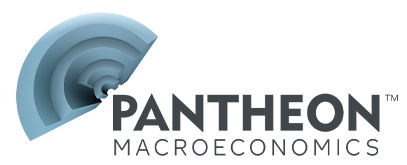Pantheon Publications
Below is a list of our Publications for the last 5 months. If you are looking for reports older than 6 months please email info@pantheonmacro.com, or contact your account rep.
Please use the filters on the right to search for a specific date or topic.
- Backloaded distortionary tax hikes will lack the credibility of an income tax hike.
- Ms. Reeves will struggle to fund the biggest directly inflation reducing measures speculated about.
- Gilt yields are likely to rise after a less disinflationary and credible Budget than expected.
In one line: Still pointing to upside risks to our forecast for Q4.
- In one line: Still pointing to upside risks to our forecast for Q4.
In one line: Private sector activity growth slows but Q4 still set to be better than Q3.
In one line: Solid headlines in services; weakness coming in industrial output.
- In one line: Private sector activity growth slows but Q4 still set to be better than Q3.
- In one line: Solid headlines in services; weakness coming in industrial output.
In one line: exports hold up ahead of row with China
Shaping up to be a very anti-climatic Q4 for India
Malaysia’s recent inflation spike could be over
- Growth in average hourly earnings is resilient because fewer entry level workers are being hired...
- ...Rising unemployment, the low quits rate and a wide range of surveys all point to an underlying slowdown.
- The NY Fed’s Williams still sees room to ease policy “...in the near term”, bolstering our December call.
- Mexico’s Q3 GDP contraction confirms momentum has stalled, with a base-effect-driven recession likely.
- Industrial weakness, soft job markets and fading public investment continue to weigh on activity.
- Lower interest rates and easing inflation will support a mild 2026 upturn, contingent on trade clarity.
- India’s PMIs are still broadly losing steam heading into 2026, pointing to ‘just’ 6.4% Q4 GDP growth…
- …The future output indices in both PMIs are tanking, pouring cold water over a mid-2026 recovery.
- Malaysian inflation eased to 1.3% in October after months of rise s; we think food inflation will return.
- Japan’s PM Takaichi revealed a mega-stimulus plan to ease the impact of inflation and boost growth.
- Inflation data support a December hike, but domestic politics and geopolitics complicate the timing…
- …Still, extreme JPY weakness may ultimately force the BoJ to hike, if its intervention impact proves short-lived.
- The tiny fall in the EZ composite PMI in November still leaves it pointing to stronger GDP growth in Q4.
- The PMIs also indicate rising price pressures, signalling little need for another ECB cut this year.
- EZ negotiated wage growth dropped in Q3, but this is not the start of a new trend.
- The bar to data preventing a December MPC rate cut is now very high, in our view…
- …But we expect an extended pause after a December cut, with inflation and growth likely to hold up.
- The Budget will likely be less disinflationary and less credible after Ms. Reeves ditched an income-tax hike.
Boost from lower rates likely has only a bit further to run.
- In one line: Payrolls flattered by the seasonals; rising unemployment keeps a December easing in play.
Payrolls flattered by the seasonals; rising unemployment keeps a December easing in play.
In one line: Stable in November; spending should pick up regardless.
